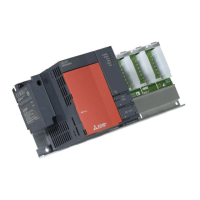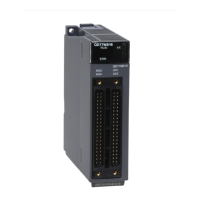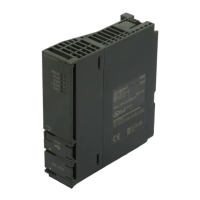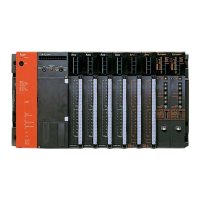App - 1 App - 1
MELSEC-Q
APPENDICES
APPENDICES
Appendix 1 Comparison of Network Module Specifications, and Compatibility
Appendix 1.1 List of comparison between MELSECNET/H and MELSECNET/H Extended
mode and MELSECNET/10 mode specifications
The MELSECNET/H system supports the MELSECNET/H and MELSECNET/H
Extended modes (high functionality/high-speed mode) and the MELSECNET/10 mode
(functional and performance compatibility mode), which are explained in this manual.
When the MELSECNET/10 mode is used, it is easy to make connection with the
AnU/QnA corresponding MELSECNET/10. However, its specifications are different
from those of the MELSECNET/10 mode, as shown in Table 1 below.
Since this manual is written assuming that MELSECNET/H is used in the MELSECNET/H
and MELSECNET/H Extended mode, refer to the "QnA/Q4AR Corresponding
MELSECNET/10 Network System Reference Manual" to use it in the MELSECNET/10
mode.
Table 1 Comparison of specifications among MELSECNET/H mode,
MELSECNET/H Extended mode and MELSECNET/10 mode
Selected mode
Specification item
MELSECNET/H network system
MELSECNET/H mode, MELSECNET/H
Extended mode
MELSECNET/10 mode
Transmission type Coaxial bus type/optical (SI) loop type
Maximum number
of link points
I/O (LX, LY) 8192 points
Link relay (LB) 16384 points 8192 points
Link register (LW) 16384 points 8192 points
Maximum number of link points per station 1
[MELSECNET/H mode]
{(LY+LB)/8 + (2 LW)} 2000 bytes
[MELSECNET/H Extended mode]
{(LY+LB)/8 + (2 LW)} 35840 bytes
{(LY+LB)/8 + (2 LW)} 2000 bytes
Transient transmission data size Maximum 1920 bytes/frame Maximum 960 bytes/frame
Communication speed 25 Mbps/10 Mbps (from switch setting) 10 Mbps
Link scan time
[MELSECNET/H mode, communication speed
10Mbps]
KB + (0.45 total stations) + (total number of
bytes used by network 0.001) (ms)
KB + (0.75 total number of stations)
+ (total number of bytes used in the network
0.001) (ms)
Transmission delay time
Sequence scan time of sending side
+ refresh time of sending side
+ LS 1
+ sequence scan time of receiving side 2
+ refresh time of receiving side
Sequence scan time of sending side
+ refresh time of sending side
+ LS 2
+ sequence scan time of receiving side 2
+ refresh time of receiving side
Communication method Token bus method [coaxial bus type]/token ring method [optical loop type]
Overall distance
500 m (1640.5 ft.) [coaxial bus type]/30 km (98430 ft.) [optical loop type]
2.5 km (8202.5 ft.) : When 4 repeaters are connected
Distance between stations
[optical loop type (Communication speed 10 Mbps)]
1 km (3281 ft.) : When QSI/Broad-band H-PCF/H-PCF cable is used
500 m (1640.5 ft.) : When SI cable is used
[coaxial bus type]
500 m (1640.5 ft.) : 5C-2V, 5C-FB
300 m (984.3 ft.) : 3C-2V
Maximum number of networks 239
Maximum number of groups 32 9
Maximum number of connected stations
32 stations (1: control station, 31: normal stations) [coaxial bus type]/
64 stations (1: control station, 63: normal stations) [optical loop type]
Maximum number of modules installed per CPU
Total of 4 modules (Basic model CPU, Q00UJCPU, Q00UCPU, Q01UCPU, and safety CPU:
1 module)
32 bits data assurance Supported Not supported
Station-based block data assurance Supported
Supported (Only for stations connected to the
QCPU when the QCPU is the control station)
Transient transmission function
N:N communication (monitor, upload/download, etc.) Supported
Number of data sending/receiving channels
Receive channels: 64
(up to 8 channels when used at the same time)
Send channels: 8
8 (fixed channels)
Compatible instructions (SEND, RECV, READ,
SREAD, WRITE, SWRITE, REQ, ZNRD, ZNWR)
Available
RRUN, RSTOP, RTMRD, RTMWR instruction Available
RECVS instruction Available Not available
1: The number of LY points of the stations set in the I/O master station is the sum total of the LY points for output to all stations within the block.
A

